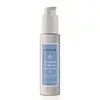What's inside
What's inside
 Key Ingredients
Key Ingredients

 Benefits
Benefits

 Concerns
Concerns

No concerns
 Ingredients Side-by-side
Ingredients Side-by-side

Water
Skin ConditioningPolysorbate 20
EmulsifyingSodium Hyaluronate
HumectantPhenoxyethanol
PreservativeHydrolyzed Hyaluronic Acid
HumectantCitrus Aurantium Dulcis Peel Oil
MaskingLimonene
PerfumingEthylhexylglycerin
Skin ConditioningPanthenol
Skin ConditioningSodium Hydroxide
BufferingPentylene Glycol
Skin ConditioningDimethylsilanol Hyaluronate
HumectantLeuconostoc/Radish Root Ferment Filtrate
AntimicrobialPrunus Armeniaca Kernel Oil
MaskingTocopheryl Acetate
AntioxidantHyaluronic Acid
HumectantSodium Hyaluronate Crosspolymer
HumectantWater, Polysorbate 20, Sodium Hyaluronate, Phenoxyethanol, Hydrolyzed Hyaluronic Acid, Citrus Aurantium Dulcis Peel Oil, Limonene, Ethylhexylglycerin, Panthenol, Sodium Hydroxide, Pentylene Glycol, Dimethylsilanol Hyaluronate, Leuconostoc/Radish Root Ferment Filtrate, Prunus Armeniaca Kernel Oil, Tocopheryl Acetate, Hyaluronic Acid, Sodium Hyaluronate Crosspolymer
Water
Skin ConditioningGlycerin
HumectantPropanediol
SolventHydrolyzed Hyaluronic Acid
HumectantSodium Hyaluronate
HumectantApricot Kernel Oil Polyglyceryl-6 Esters
EmollientPolyglyceryl-6 Oleate
EmulsifyingCaprylyl Glycol
EmollientPolyglyceryl-10 Oleate
Skin ConditioningAcrylates/C10-30 Alkyl Acrylate Crosspolymer
Emulsion StabilisingMagnolol
AntioxidantKaempferol
AntioxidantTetrahexyldecyl Ascorbate
AntioxidantGlycolipids
Skin ConditioningGlycine Soja Sterols
EmollientTocopheryl Acetate
AntioxidantPhenoxyethanol
PreservativeSorbitan Palmate
EmollientPotassium Sorbate
PreservativeSodium Hydroxide
BufferingGlyceryl Polyacrylate
Xanthan Gum
EmulsifyingHexylene Glycol
EmulsifyingWater, Glycerin, Propanediol, Hydrolyzed Hyaluronic Acid, Sodium Hyaluronate, Apricot Kernel Oil Polyglyceryl-6 Esters, Polyglyceryl-6 Oleate, Caprylyl Glycol, Polyglyceryl-10 Oleate, Acrylates/C10-30 Alkyl Acrylate Crosspolymer, Magnolol, Kaempferol, Tetrahexyldecyl Ascorbate, Glycolipids, Glycine Soja Sterols, Tocopheryl Acetate, Phenoxyethanol, Sorbitan Palmate, Potassium Sorbate, Sodium Hydroxide, Glyceryl Polyacrylate, Xanthan Gum, Hexylene Glycol
 Reviews
Reviews

Ingredients Explained
These ingredients are found in both products.
Ingredients higher up in an ingredient list are typically present in a larger amount.
Hydrolyzed Hyaluronic Acid is a form of hyaluronic acid. It is created by the hydrolysis of hyaluronic acid with a high molecular weight. Once created, Hydrolyzed Hyaluronic Acid has a low molecular weight.
Low molecular weight HA has been shown to hydrate and increase elasticity of the skin. Increasing elasticity is also associated with reduction of wrinkle depth.
One study found topical low molecular weight hyaluronic acid may be considered for the treatment of rosacea in the adult population. However, we always recommend speaking with a professional about your skin concerns.
Hyaluronic acids are a humectant. This means they draw moisture from the air. Hyaluronic acids help moisturize, soothe, and protect the skin.
Read more about other common forms of hyaluronic acid:
Learn more about Hydrolyzed Hyaluronic AcidPhenoxyethanol is a preservative that has germicide, antimicrobial, and aromatic properties. Studies show that phenoxyethanol can prevent microbial growth. By itself, it has a scent that is similar to that of a rose.
It's often used in formulations along with Caprylyl Glycol to preserve the shelf life of products.
Sodium Hyaluronate is hyaluronic acid's salt form. It is commonly derived from the sodium salt of hyaluronic acid.
Like hyaluronic acid, it is great at holding water and acts as a humectant. This makes it a great skin hydrating ingredient.
Sodium Hyaluronate is naturally occurring in our bodies and is mostly found in eye fluid and joints.
These are some other common types of Hyaluronic Acid:
Learn more about Sodium HyaluronateSodium Hydroxide is also known as lye or caustic soda. It is used to adjust the pH of products; many ingredients require a specific pH to be effective.
In small amounts, sodium hydroxide is considered safe to use. However, large amounts may cause chemical burns due to its high alkaline.
Your skin has a natural pH and acid mantle. This acid mantle helps prevent harmful bacteria from breaking through. The acid mantle also helps keep your skin hydrated.
"Alkaline" refers to a high pH level. A low pH level would be considered acidic.
Learn more about Sodium HydroxideTocopheryl Acetate is AKA Vitamin E. It is an antioxidant and protects your skin from free radicals. Free radicals damage the skin by breaking down collagen.
One study found using Tocopheryl Acetate with Vitamin C decreased the number of sunburned cells.
Tocopheryl Acetate is commonly found in both skincare and dietary supplements.
Learn more about Tocopheryl AcetateWater. It's the most common cosmetic ingredient of all. You'll usually see it at the top of ingredient lists, meaning that it makes up the largest part of the product.
So why is it so popular? Water most often acts as a solvent - this means that it helps dissolve other ingredients into the formulation.
You'll also recognize water as that liquid we all need to stay alive. If you see this, drink a glass of water. Stay hydrated!
Learn more about Water